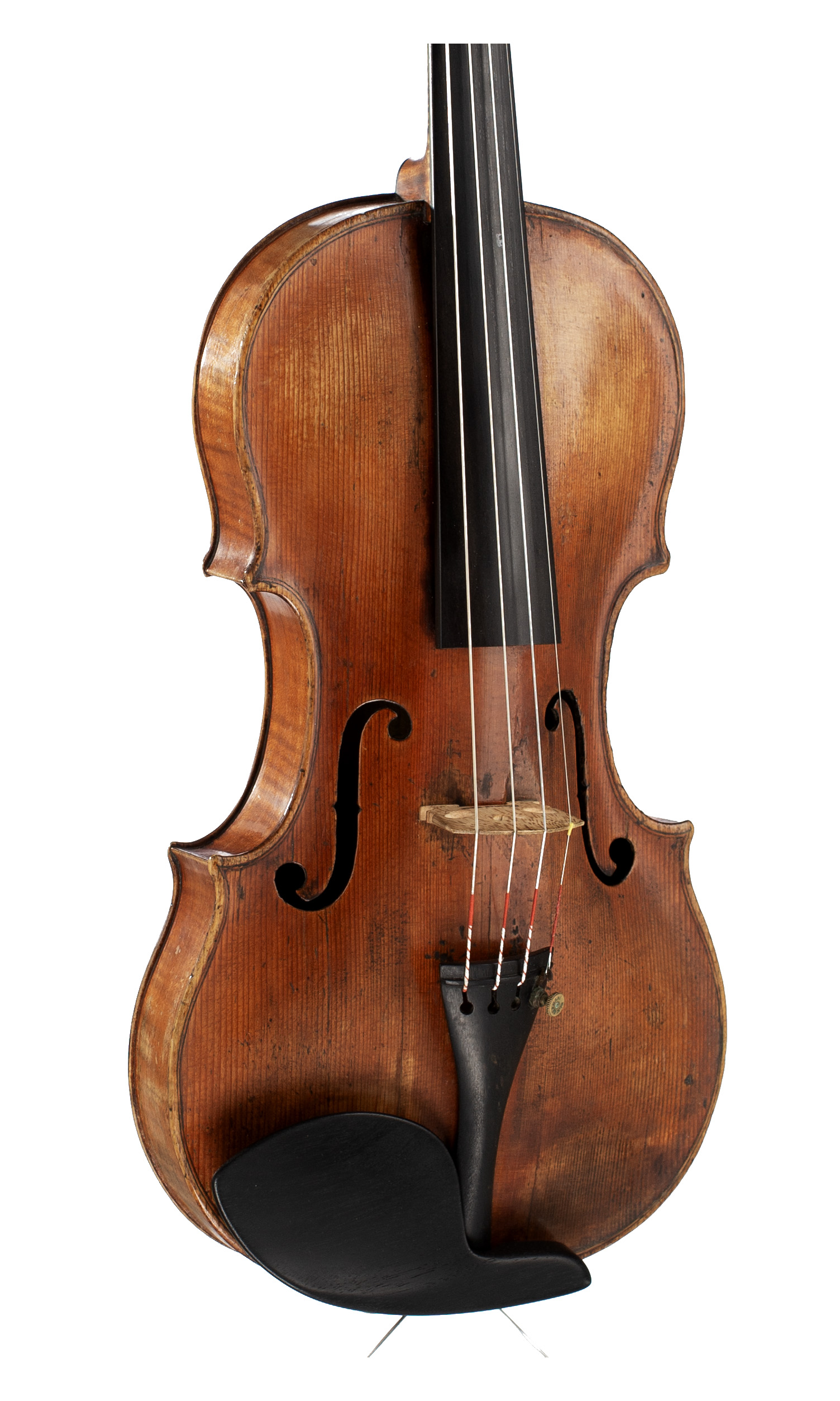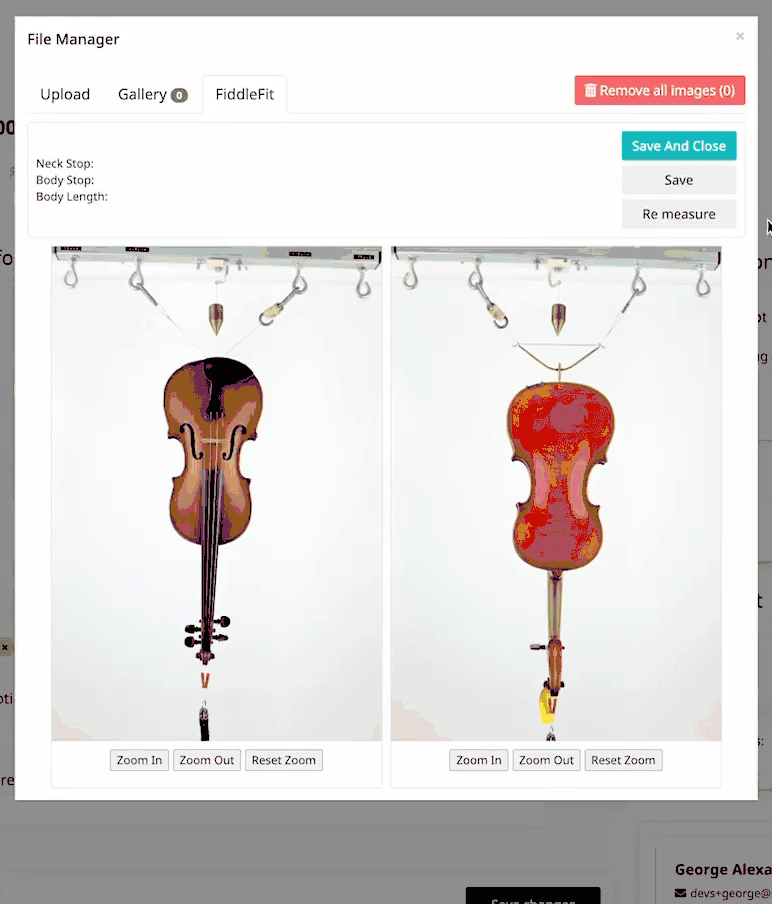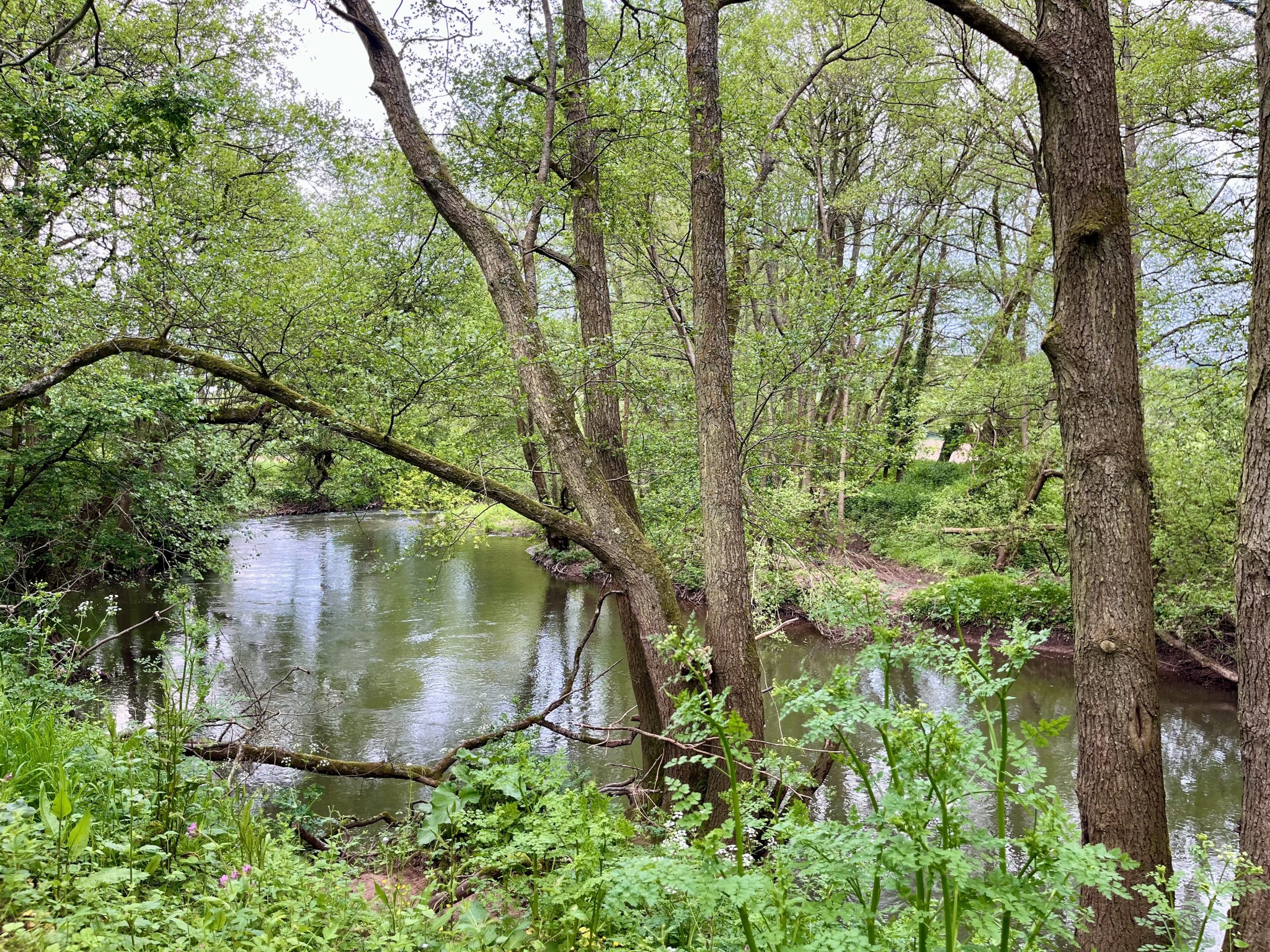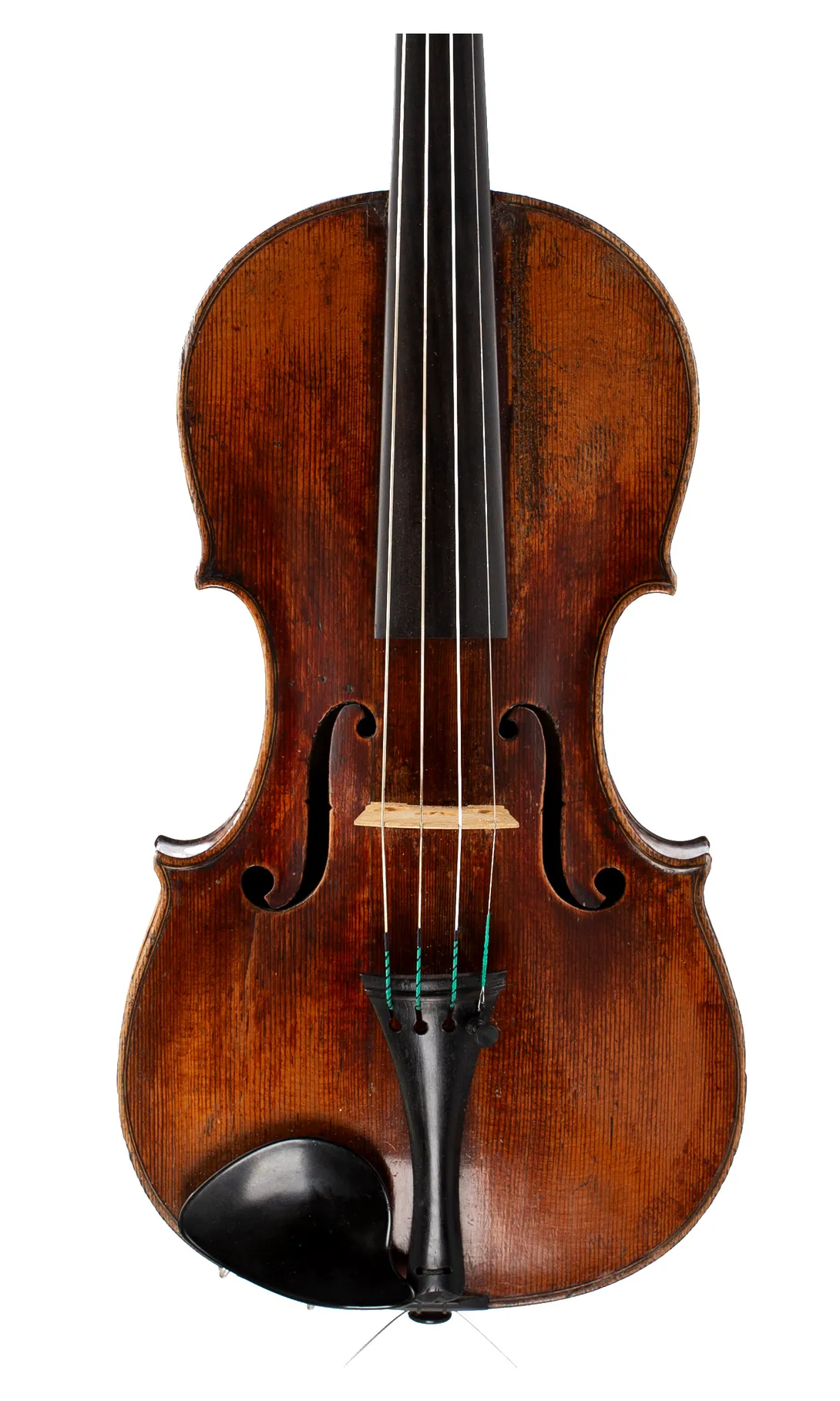

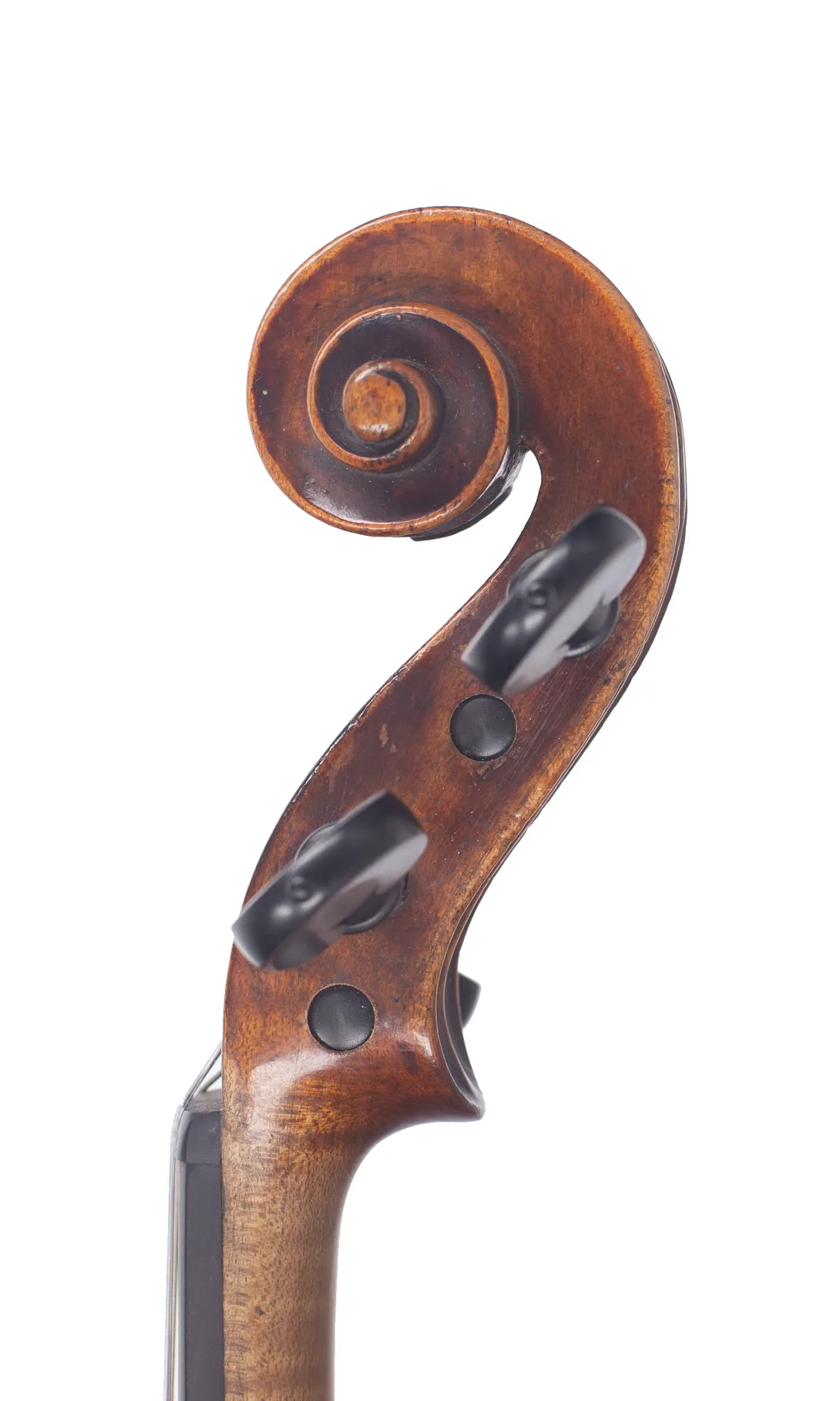
To those interested in English violin making, the appearance of an original, signed and dated violin by John Morris of Bath is quite an event. Especially when it is so well preserved. Morris’ authenticated work is rare, and that may well be tied up with its close similarity to that of Benjamin Banks of Salisbury.
He is thought to have been a pupil of Henry Rawlins in London, who is but another almost indiscernible maker, associated stylistically with Forster- although it is not known whether he actually worked for him. It feels like going around in circles maybe, but Forster’s work itself has a clear connection with Banks. It may even simply be a mistaken reading of the label of the confusingly named John Morrison, another enigmatic London maker of the period, who signed himself ‘from Foster’.
What little is known of Morris is that he first appears in the Bath city records in 1800 as a musical instrument maker at no. 4 Belvedere, a picturesque and seemingly affluent district of the town once dominated by Belvedere House, built in the late eighteenth century. The archive shows he lived and worked there until 1829, which is when he may have died; a label of 1819 announces that he was then ‘in the 75th year of my life’.
So what we can tell is that he was born in about 1744, but whether he spent the years until 1800 in London with Forster or in Salisbury with Banks is not certain. Bath is certainly a good deal closer to Salisbury than London, which makes the Banks connection very plausible.
 This violin makes a strong case for the latter. It is clearly dated 1790, ten years before the first archival record of him. It is also the earliest traceable authentic label, and it marks five years before Benjamin Banks’ death in Salisbury. It shares many features typical of Banks; the Staineresque model and arching, the thin, intense red varnish laid close to the wood, the distinctive setting of the outward leaning ‘F’ holes, but in some details the work is Morris’ own. The scroll lacks the stylistic eccentricity of Banks’ carving, but has a finely poised and concentric volute, with the flutings gracefully finished at the throat, unlike Banks’ abrupt terminus half-way down the front face. It has a more Amatise pegbox, without the swan neck shape and rounded chamfers of a Banks. On this instrument he seems to have used beech for the purfling, which is very unusual amongst English makers. One other recorded instrument, made some twenty years after this example, is described as having oddly bevelled edgework.
This violin makes a strong case for the latter. It is clearly dated 1790, ten years before the first archival record of him. It is also the earliest traceable authentic label, and it marks five years before Benjamin Banks’ death in Salisbury. It shares many features typical of Banks; the Staineresque model and arching, the thin, intense red varnish laid close to the wood, the distinctive setting of the outward leaning ‘F’ holes, but in some details the work is Morris’ own. The scroll lacks the stylistic eccentricity of Banks’ carving, but has a finely poised and concentric volute, with the flutings gracefully finished at the throat, unlike Banks’ abrupt terminus half-way down the front face. It has a more Amatise pegbox, without the swan neck shape and rounded chamfers of a Banks. On this instrument he seems to have used beech for the purfling, which is very unusual amongst English makers. One other recorded instrument, made some twenty years after this example, is described as having oddly bevelled edgework.
The violin is altogether delightful. It is individual without being eccentric and beautifully crafted. It is a treat to see, but surely prompts the question- how many other instruments made by the enigmatic John Morris of Bath are lurking abroad under a false flag of Benjamin Banks?

